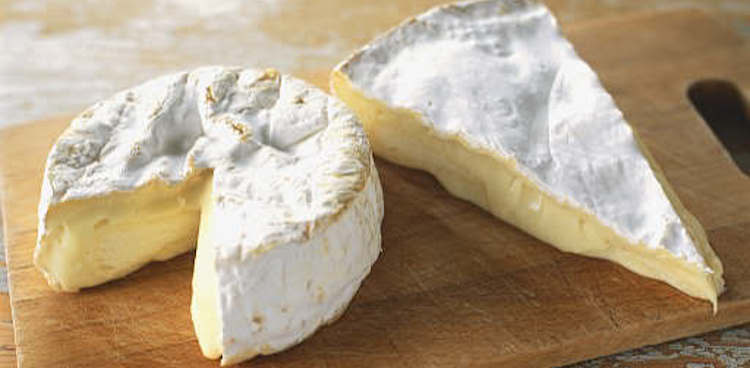Contents
In appearance, Brie and Camembert are very similar. Round, soft, with white mold, both are made from cow’s milk. But still, these are two completely different cheeses. We will tell you how they differ.
Origin
Brie is one of the most ancient French cheeses and has been popular since the Middle Ages. And always, by the way, was considered the cheese of kings. Queen Margot and Henry IV were big fans of brie. The Duke Charles of Orleans (a member of the royal family of Valois and one of the most prominent poets in France) presented pieces of brie to his court ladies.

And Blanca of Navarre (the same one that the Countess of Champagne) often sent this cheese as a gift to King Philip Augustus, who was delighted with him.
Brie got its name in honor of the French province of Brie, located in the central region of Ile-de-France near Paris. It was there that this cheese was first made in the 8th century. But Camembert began to be made a thousand years later – in the late 17th – early 19th centuries.

Camembert village in Normandy is considered the birthplace of Camembert. Legend has it that the first Camembert was cooked by the peasant Marie Arel. During the Great French Revolution, Marie allegedly saved from death a monk who was hiding from persecution, who in gratitude revealed to her the secret of making this cheese known only to him. And this cheese had only an indirect relation to brie.
Size and packaging
Brie is most often formed into large round cakes with a diameter of up to 60 centimeters or small heads up to 12 centimeters. Camembert is made only in small round cakes up to 12 centimeters in diameter.

Accordingly, brie can be sold both in small heads and in portioned triangles, but a real Camembert can only be a whole head, which is packed, as a rule, in a round wooden box. In this box, by the way, Camembert can be baked right away.
By the way, about baking of Brie and Camembert
Camembert is fatter than brie. Accordingly, it melts and melts faster. This is due to the fact that during the production process, cream is added to brie and camembert, but in different proportions (camembert contains 60% milk fat, brie only 45%).
In addition, during production, lactic acid cultures are introduced into Camembert five times, and into brie only once. That is why Camembert has a more pronounced smell and taste, and brie is softer and more delicate in taste.
Color, taste and aroma of Camembert and Brie
Brie is characterized by a pale color with a grayish tinge. The aroma of brie is subtle, one might even say elegant, with a scent of hazelnuts. Young brie has a mild and delicate flavor, and as it ripens, the pulp becomes spicy. The thinner the brie, the sharper the cheese. Eating brie is best when it is at room temperature. Therefore, you need to get it out of the refrigerator in advance.
Camembert’s core is light, yellowish-creamy. It tastes more oily, strongly ripened Camembert generally has liquid “insides” (this is far from everyone’s taste, but this cheese is considered the most valuable). This cheese tastes tender, slightly spicy and slightly sweet.
Camembert has a weirder smell. It can give off from a cow, mushrooms or hay – it all depends on the aging process and storage of the cheese. It is not for nothing that the French poet and prose writer Leon-Paul Fargue once described the scent of Camembert as “the smell of the feet of God”.










